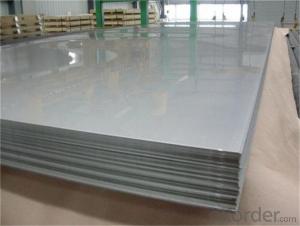Aluminum Sheet Checkered /Aluminum Sheet Embossing Sheet
- Loading Port:
- Shanghai
- Payment Terms:
- TT OR LC
- Min Order Qty:
- 5 m.t.
- Supply Capability:
- 10000 m.t./month
OKorder Service Pledge
OKorder Financial Service
You Might Also Like
Description
Aluminum sheet checkered /Aluminum sheet embossing sheet
| Material | 1000 series: 1050. 1070. 1100 2025. 2117. 2218. 2618. 6000 series: 6005. 6011. 6053. 6351. 6061. 6101. 6151. 6201. 6261. 6262. 6063. 6463. 6066.6070 7000series: 7001. 7005. 7072. 7075. 7076. 7175. 7178. 7079 8000 series:8011,8021,8079 etc |
| Standard | GB/T17748-2008 |
| Certification | ISO9001,ISO14001, ISO9001:2000 |
| Temper | T4,T5,T6,H111,H112 |
| Surface treatment | Polished,Mill Finished,anodized or power sprayed |
| Features | High weather resistance anti scratch anticorrosion and good weather resistance subtle edges and elegant appearance and easy processing and installation high brightness and hardness |
| Resolution | 2%-98% |
| Advantages | 1)Excellent machining properties 2)Suited to marine and low temp applications |
| Note | If you have any other questin,welcome for your consultation |
Products details:
1)Chemical compositions&mechanical property&Size
Alloy | Si | Fe | Cu | Mn | Mg | Cr | Zn | Ti | Al |
5005 | 0.30 | 0.70 | 0.20 | 0.20 | 0.50-1.10 | 0.10 | 0.25 | - | spare |
5052 | 0.25 | 0.40 | 0.10 | 0.10 | 2.2-2.8 | 0.15-0.35 | 0.10 | spare | |
5083 | 0.40 | 0.40 | 0.10 | 0.40-1.0 | 4.0-4.9 | 0.05-0.25 | 0.25 | 0.15 | spare |
6060 | 0.30 -0.6 | 0.10 -0.30 | ≤0.10 | ≤0.10 | 0.35~0.6 | ≤0.05 | ≤0.15 | ≤0.10 | spare |
Alloy | Thickness (mm) | Width (mm) | Length (mm) | Temper | DC or CC | |
1050,1060, 1070,1100, 1235 | 1)0.2-3.0; 2)3.0-150 | 300-1850; 900-1900 | 1000-8000 | 1)O,H12,H22, H14,H24,H26, H18,H32, 2)H112,H111; | 1)DC,CC 2)DC | |
3003,3004, 3105,3005 | 1)0.2-3.0; 2)3.0-150 | 30-1850 900-1900 | 1000-8000 | 1)O,H12,H22, H14,H24,H26, H18,H32, 2)H112,H111; | 1)DC,CC 2)DC | |
5052,5083, 5754,5005 | 1)0.2-3.0 2)3.0-150 | 300-1850 900-1900 | 1000-8000 | 1)O,H12,H22, H14,H24,H26, H18,H32, 2)H112,H111; | 1)DC 2)DC | |
6061,6063 | 0.5-3.0 | 300-1500 | 1000-6000 | T6,T321 | DC | |
6060 | 0.2-100 | 200-1500 | ≤12000mm | T4,T5,T6, H111,H112 | DC | |
| Application | 1) Home Lighting Lighting Network; 2)Solar reflective pieces; 3)architectural appearance; 4)Indoor decoration: ceiling, metope, etc 5)drying cabinet; 6)elevator; 7)scutcheon, luggage etc; 8)The car inside and outside decoration; 9) Indoor decorations, such as picture frames; 10) Household appliances: refrigerators microwave audio equipment, etc 11)Aerospace and military aspects, such as China's large aircraft manufacturing, the shenzhou spacecraft series, satellites, etc 12)Precision Parts Processing; 13)mould making; 14)Chemical/thermal insulation pipe coating etc |
Packaging & Shipping
3)Package and shipment:
Package: Standard seaworthy packing or as per request
Transports:Containler sizes:
20ft GP:5898mm(Length)x2352mm(Width)x2393mm(High)
40ft GP:12032mm(Length)x2352mm(Width)x2393mm(High)
40ft HC:12032mm(Lengh)x2352mm(Width)x2698mm(High)
20feet container load 25tons pipe whose length is under5.8m
40feet container load 25tons pipe whose length is under11.8m
Our Services
1 Customer and reputation first
2 Timely feedback
3 Low MOQ
4Timely delivery
5 Competitive price
6Different size can be supplyed as your request
7 Professional service of technical and shipping support
8More than 30 years experience in the cold and hot rolled sheet/coil/stri experience
Photos
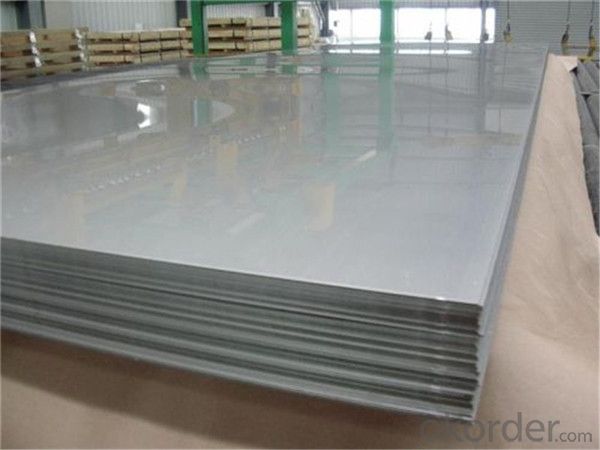
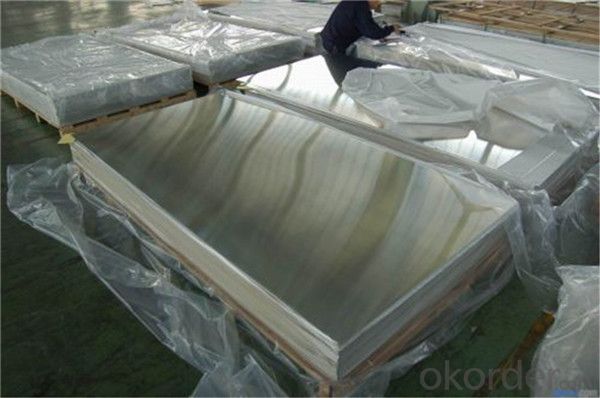
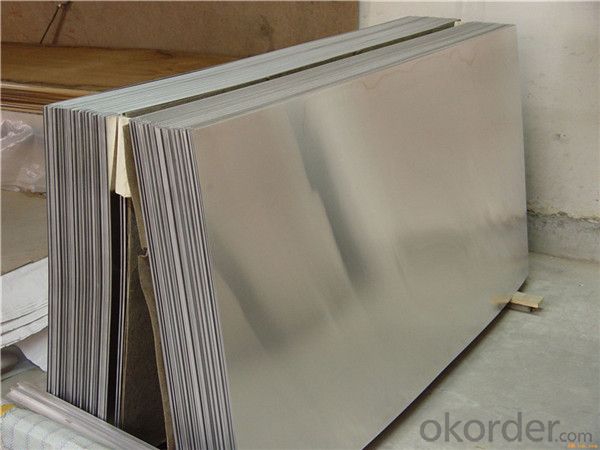
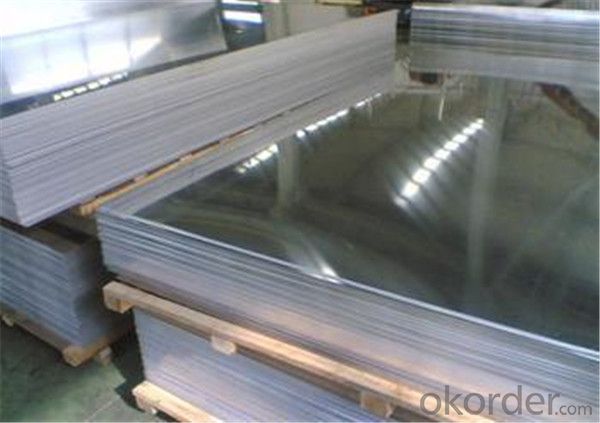
- Q:How are aluminum sheets tested for quality and compliance with industry standards?
- Aluminum sheets are tested for quality and compliance with industry standards through a comprehensive set of tests and inspections. These tests ensure that the aluminum sheets meet the required specifications and performance criteria. One of the commonly used tests is the visual inspection, where the sheets are examined for any surface defects such as scratches, dents, or cracks. This is crucial to ensure a smooth and flawless appearance. Further, dimensional checks are performed to verify the thickness, width, and length of the sheets. Precise measurements are necessary to meet the specific requirements of the intended application. To assess the mechanical properties, various tests are conducted. Tensile strength tests evaluate the maximum load the aluminum sheet can withstand before breaking. This helps determine the sheet's structural integrity and its ability to withstand external forces. Similarly, hardness tests measure the sheet's resistance to indentation or penetration, providing insights into its durability and resistance to wear. Chemical composition analysis is also conducted to ensure that the aluminum sheets contain the necessary alloying elements within the specified limits. This analysis helps confirm that the material composition aligns with industry standards, as different alloy compositions can affect the sheets' mechanical properties and suitability for various applications. Surface integrity is evaluated through corrosion resistance tests, which assess the sheet's ability to withstand environmental factors such as moisture, chemicals, and temperature variations. This is particularly important for applications where aluminum sheets are exposed to corrosive substances or harsh environments. In addition to these tests, aluminum sheets may undergo non-destructive testing techniques such as ultrasonic testing or eddy current testing. These methods help identify internal defects or irregularities that may not be visible through visual inspection alone. Overall, a combination of visual inspections, dimensional checks, mechanical tests, chemical composition analysis, and surface integrity evaluations are employed to ensure that aluminum sheets meet the quality standards and compliance requirements set by the industry. These rigorous testing procedures guarantee that the sheets are fit for their intended purpose and meet the expectations of customers.
- Q:Can aluminum sheets be bent without cracking?
- Yes, aluminum sheets can be bent without cracking. Aluminum is a highly malleable and ductile metal, which means it can be easily shaped and formed without breaking. However, the ability to bend aluminum sheets without cracking depends on several factors such as the thickness of the sheet, the type and grade of aluminum used, and the specific bending technique employed. It is important to use proper tools and techniques when bending aluminum to ensure that it remains intact and free from cracks.
- Q:Are the aluminum sheets suitable for manufacturing aircraft fuselages?
- Yes, aluminum sheets are suitable for manufacturing aircraft fuselages. Aluminum is widely used in the aerospace industry due to its excellent strength-to-weight ratio, corrosion resistance, and easy formability. It provides structural integrity while keeping the weight of the fuselage low, making it an ideal material choice for aircraft manufacturing.
- Q:Can aluminum sheets be an alternative to wood in certain applications?
- Yes, aluminum sheets can be an alternative to wood in certain applications. Aluminum sheets have several advantages over wood, including being lightweight, durable, and resistant to corrosion and fire. They can be used in various industries such as construction, automotive, aerospace, and marine, where wood may not be suitable due to its limitations. However, the selection of material depends on the specific requirements of the application and the desired properties needed.
- Q:I have a set of Chrome Aluminum rims, and two of them have scratches on them. So instead of buying new ones, is it possible to paint them. I was thinking black.
- Chrome rims and aluminum rims are not the same thing. There are chrome plated aluminum rims, but not many. Aluminum rims can be painted pretty easily as aluminum is pretty soft and you can sand it easily to paint it. If they are chrome plated it is harder to do because chrome plating is very hard, and doesn't sand easily, making it hard to get something to stick. Go to an auto paint store and tell them what you want to do. Use the best materials you can get, otherwise the paint will peel off and it will look worse than it does now.
- Q:What are the different types of surface treatments for aluminum sheets in the marine industry?
- In the marine industry, aluminum sheets are widely used due to their lightweight, corrosion-resistant properties. To enhance the durability and performance of aluminum sheets in marine environments, various surface treatments are employed. These treatments provide an additional layer of protection against corrosion, oxidation, and other forms of wear and tear. Some of the different types of surface treatments for aluminum sheets in the marine industry include: 1. Anodizing: Anodizing is a common surface treatment for aluminum sheets. It involves creating an oxide layer on the surface of the aluminum through an electrochemical process. This oxide layer adds strength, improves corrosion resistance, and can also be dyed to provide aesthetic appeal. 2. Powder coating: Powder coating is a popular method to enhance the appearance and durability of aluminum sheets. It involves applying a dry powder to the surface of the aluminum and then heating it to create a protective coating. Powder coating provides excellent resistance to corrosion, UV rays, and scratches. 3. Chromate conversion coating: Chromate conversion coating, also known as chemical film coating or chromating, involves immersing the aluminum sheets in a solution containing chromate compounds. This process forms a thin layer of chromate conversion coating on the surface, which enhances corrosion resistance and provides a good base for subsequent painting or bonding. 4. Paint coating: Applying a paint coating to aluminum sheets is another surface treatment method in the marine industry. Paint coatings not only enhance the appearance but also provide a protective layer against corrosion, saltwater, and other harsh environmental conditions. Epoxy or polyurethane-based paints are commonly used for marine applications. 5. Mechanical treatments: Mechanical treatments such as brushing, grinding, or polishing can be performed on aluminum sheets to improve their surface finish. These treatments remove impurities, smoothing out any imperfections and enhancing the overall appearance of the aluminum surface. Each of these surface treatments has its own advantages and is chosen based on the specific requirements of the marine application. By selecting the appropriate surface treatment, manufacturers can ensure that aluminum sheets meet the necessary performance and durability standards in the demanding marine industry.
- Q:Can aluminum sheets be roll-formed?
- Yes, aluminum sheets can be roll-formed.
- Q:Are 101 aluminum sheets suitable for chemical processing equipment?
- 101 aluminum sheets are not suitable for chemical processing equipment. While aluminum is a versatile and widely used material, it is not recommended for applications involving strong acids or bases. Aluminum is susceptible to corrosion when exposed to certain chemicals, and this can compromise the integrity of the equipment and potentially lead to leaks or other safety hazards. For chemical processing equipment, it is advisable to choose materials that are specifically designed and manufactured to withstand the corrosive effects of the chemicals being used.
- Q:im wondering what happens if you MIG weld aluminum with the correct wire but without using a shielding gas? Would it just be extremely messy or does there HAVE to be an inert gas flowing for it to bond?thanks
- In the presence or air, the aluminum oxidizes so fast that making a bond becomes extremely difficult. The shielding gas prevents oxidation by excluding oxygen. The gas doesn't enter into the process, it just inhibits oxidation.
- Q:What are the different types of edges available for aluminum sheets?
- Aluminum sheets offer a variety of edge options to suit different applications and desired appearances. Firstly, there is the straightforward straight edge option. This involves cutting the aluminum sheet in a straight line without any additional alterations or shaping. Another choice is the beveled edge, accomplished by cutting the aluminum sheet at an angle, typically 45 degrees. This creates a chamfered or sloping edge, often used for decorative purposes or to minimize sharpness. For a smooth and rounded edge, the rolled edge is a popular option. By bending the edge of the aluminum sheet, a rounded finish is achieved. This is commonly chosen for safety reasons, as it eliminates sharp edges. A hemmed edge involves folding the aluminum sheet's edge back onto itself, resulting in a double layer of material. This offers increased strength and durability, making it suitable for applications where the edge will be exposed or subject to wear and tear. In industries like aerospace and automotive, the tapered edge is frequently utilized. This involves gradually reducing the thickness of the aluminum sheet towards the edge, reducing weight while maintaining strength. Lastly, there is the flanged edge, created by bending the aluminum sheet's edge at a right angle to form a lip or flange. This type of edge is commonly employed when the aluminum sheet needs to be attached or joined with other materials. Ultimately, the choice of edge type depends on specific project requirements, encompassing functionality, aesthetics, and safety considerations.
1. Manufacturer Overview |
|
|---|---|
| Location | |
| Year Established | |
| Annual Output Value | |
| Main Markets | |
| Company Certifications | |
2. Manufacturer Certificates |
|
|---|---|
| a) Certification Name | |
| Range | |
| Reference | |
| Validity Period | |
3. Manufacturer Capability |
|
|---|---|
| a)Trade Capacity | |
| Nearest Port | |
| Export Percentage | |
| No.of Employees in Trade Department | |
| Language Spoken: | |
| b)Factory Information | |
| Factory Size: | |
| No. of Production Lines | |
| Contract Manufacturing | |
| Product Price Range | |
Send your message to us
Aluminum Sheet Checkered /Aluminum Sheet Embossing Sheet
- Loading Port:
- Shanghai
- Payment Terms:
- TT OR LC
- Min Order Qty:
- 5 m.t.
- Supply Capability:
- 10000 m.t./month
OKorder Service Pledge
OKorder Financial Service
Similar products
New products
Hot products
Hot Searches
Related keywords
